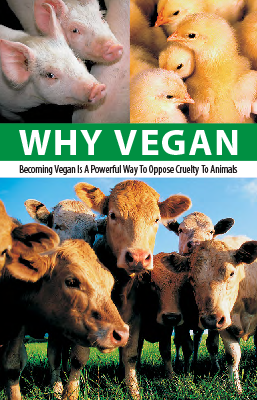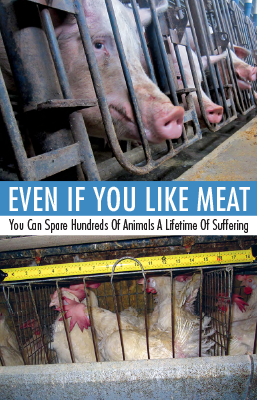By Melissa Li, Vegan Outreach Board Member
Part of the joy I experience in the animal rights movement is to hear an activist’s story of how they became involved in animal rights, what influenced them, and what they find as an effective means of activism. I am fascinated by what propels someone to go forward and take further action, because it inspires me to be more active. The Pig In Thin Air: An Identification is Dr. Alex Lockwood’s personal account of how he became involved in animal rights.
Do you remember the Facebook image of a pig leaping out of an open bed truck headed for slaughter? That this image was taken from the car behind the truck, on a busy street in China? Many animal rights activists likely know this image that quickly went viral, and remember that the pig, who, because she fought to escape and save her life, was allowed to live. This image resonated with the author Alex Lockwood, and is the source of the title for the book.
Each animal rights activist’s story depicts a path, from becoming aware of atrocities imposed on animals, and journeying towards action against these atrocities. Dr. Alex Lockwood originally began his career as an environmentalist and as an academic. As he approached his mid-thirties, he struggled with unease, and he knew that his health and personal relationships were faltering. He knew there was a disassociation from his feelings and his own body. As he began to correct these issues in his life, he became cognizant and empathetic towards issues in animal advocacy.
He was awarded a Winston Churchill Travel Fellowship in 2014, and used this to travel to North America to learn from animal advocates. Originally, he was to be stationed at the Vancouver Aquarium as a visiting writer in residence. However, the Vancouver Aquarium became a target of an animal rights campaign; he aborted this, and quickly became involved with animal rights groups. I found it interesting to read his perceptions of different methods of action, and to read of his encounters with contemporary groups such as Direct Action Everywhere and Toronto Pig Save, as well as better established organizations such as Farm Sanctuary.
Throughout his interactions with various organizations, he cites references that support the idea that one must be aware of one’s physical body—to embrace it in order to relate to a nonhuman animal’s body. He quotes Lori Gruen:
[T]he distinction between self and other isn’t one of distance and it doesn’t entail dominance or subordination…it is centrally important that one has a balanced and clear self-concept to be able to engage empathetically with others.
When Dr. Lockwood was able to reconnect with his body, it gave him the capacity to live a more compassionate, feeling life.
Dr. Lockwood frames The Pig In Thin Air into two questions: 1. What makes an animal advocate? And 2. How can I be a good animal advocate? Interspersed in these sections are his experiences and citations from several established references regarding efficacy. His writing is eloquent, benefiting from his background in writing. He is open about his personal history, and willing to describe his setbacks. Towards the end, he chooses his own path for animal advocacy, which for every animal rights activist, they must find their place. In the culmination of his summer fellowship, his action in animal advocacy is an achievement; it is astonishing as well as inspiring. He has found his way, and knows he will fight for animals for the rest of his life.
















